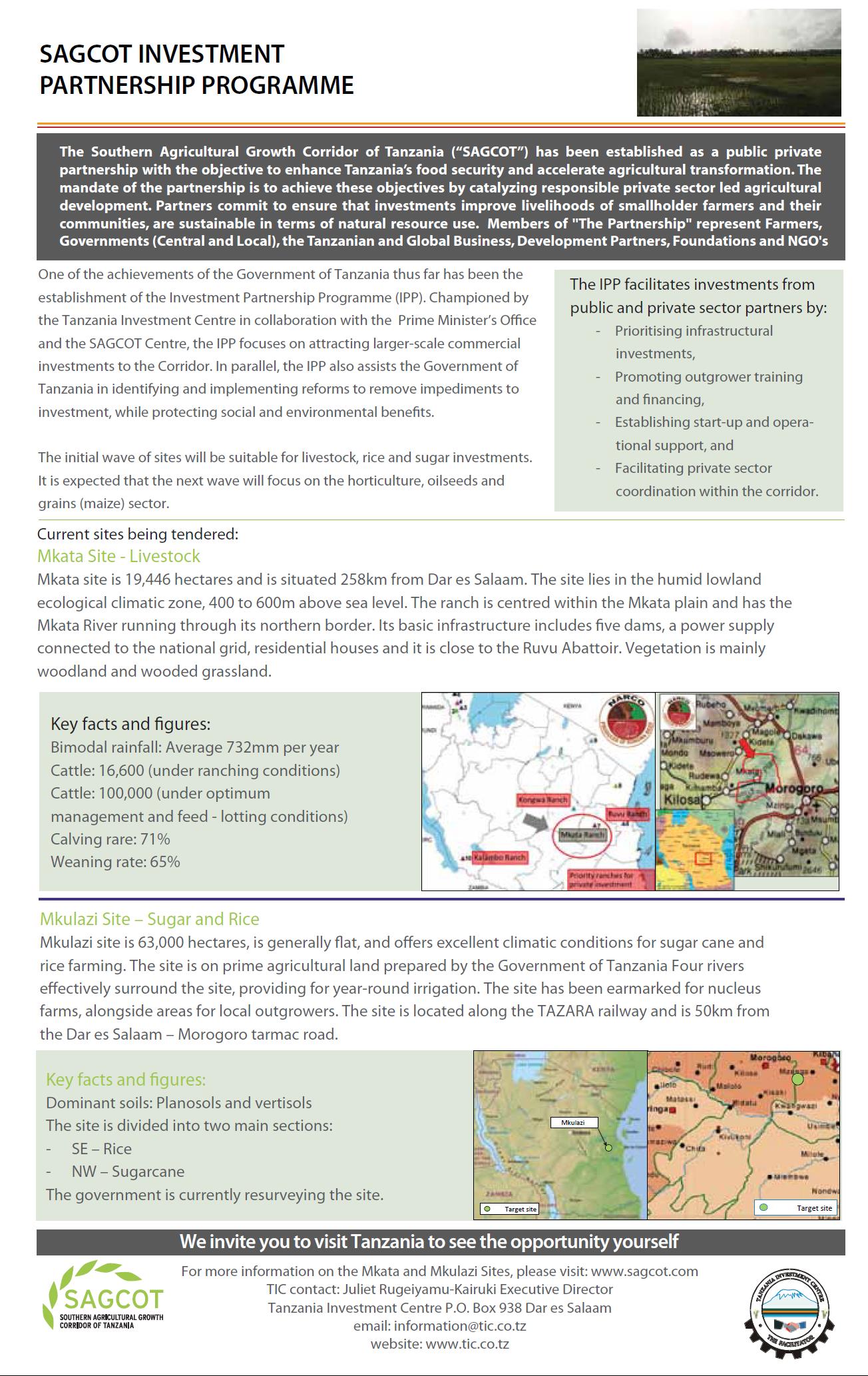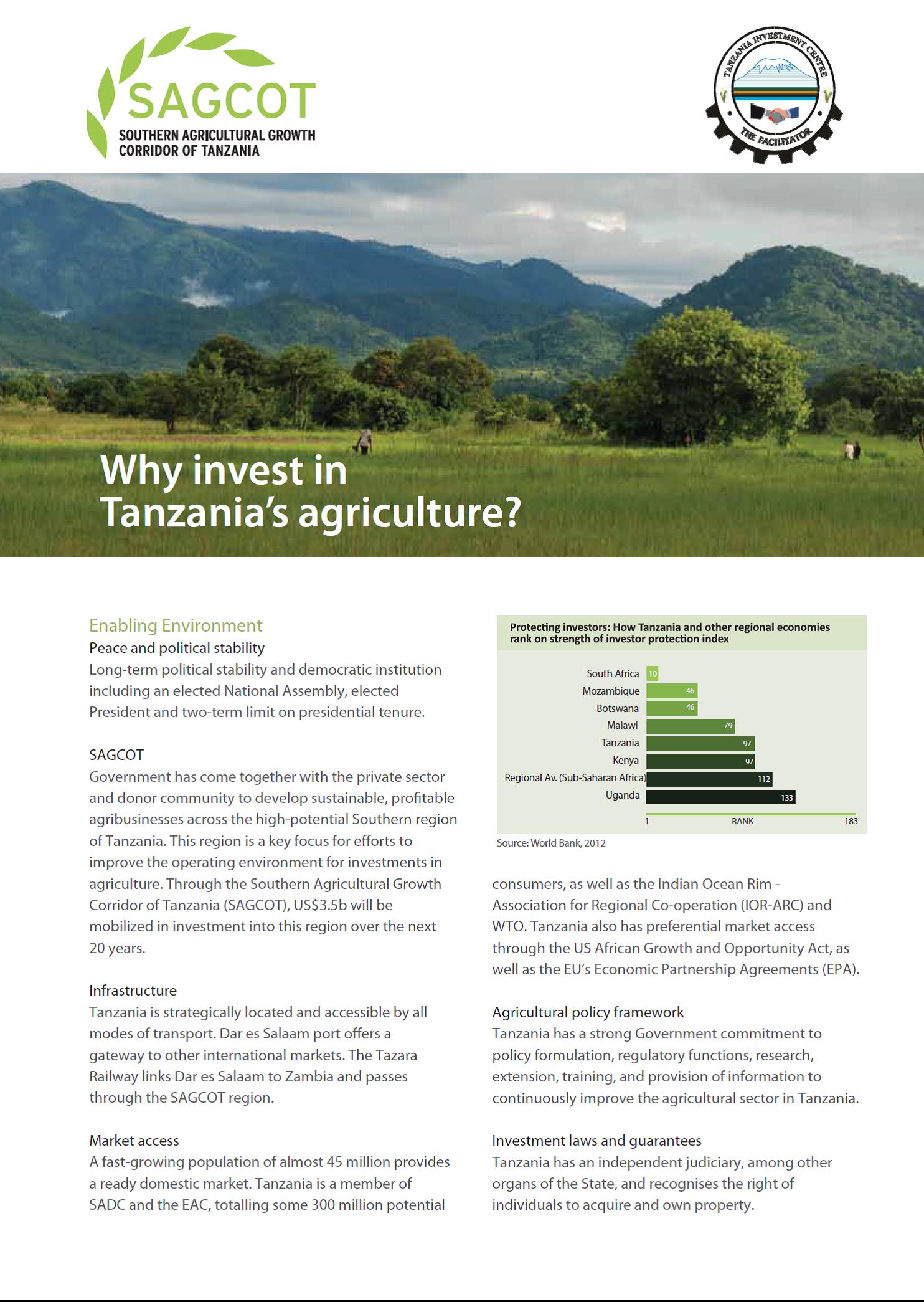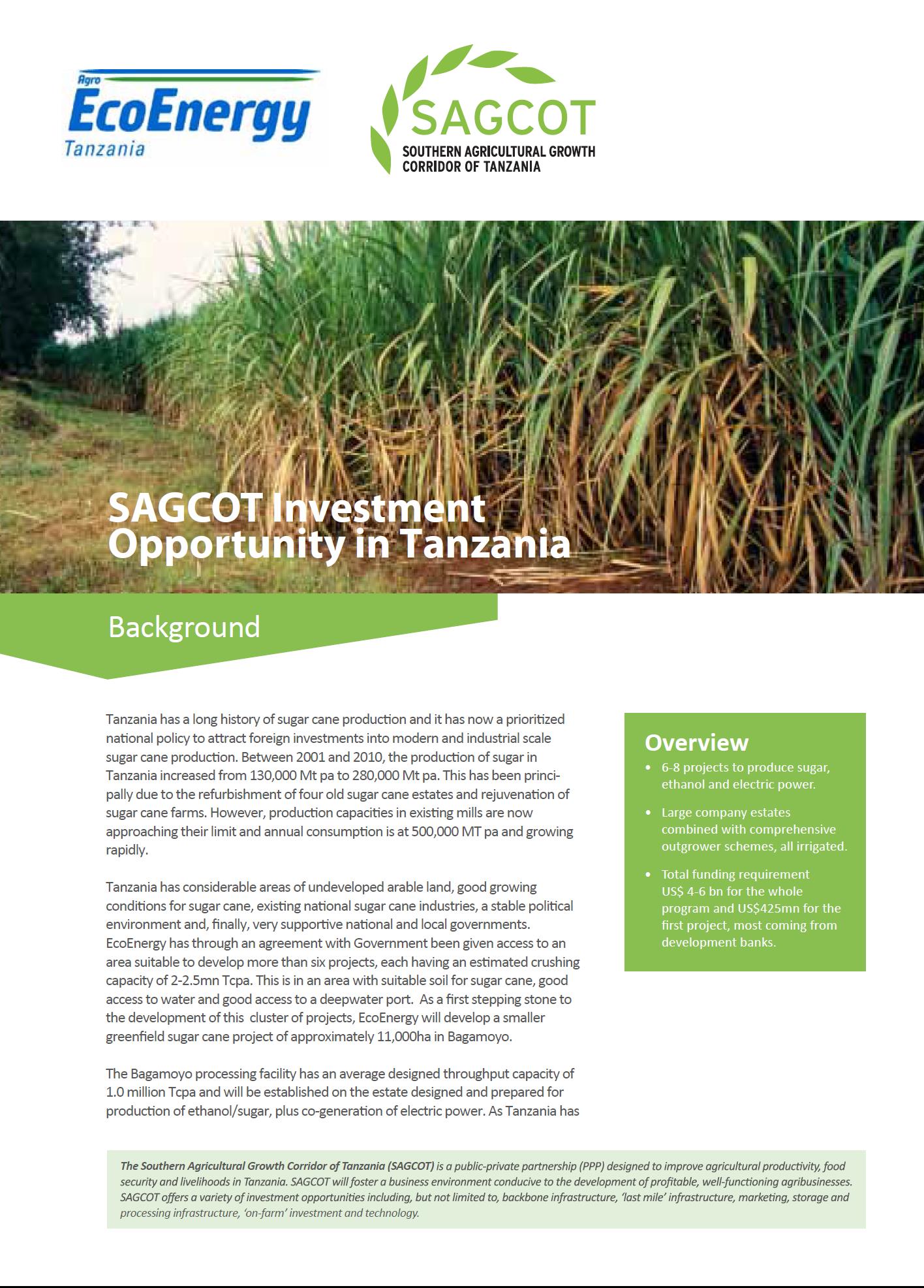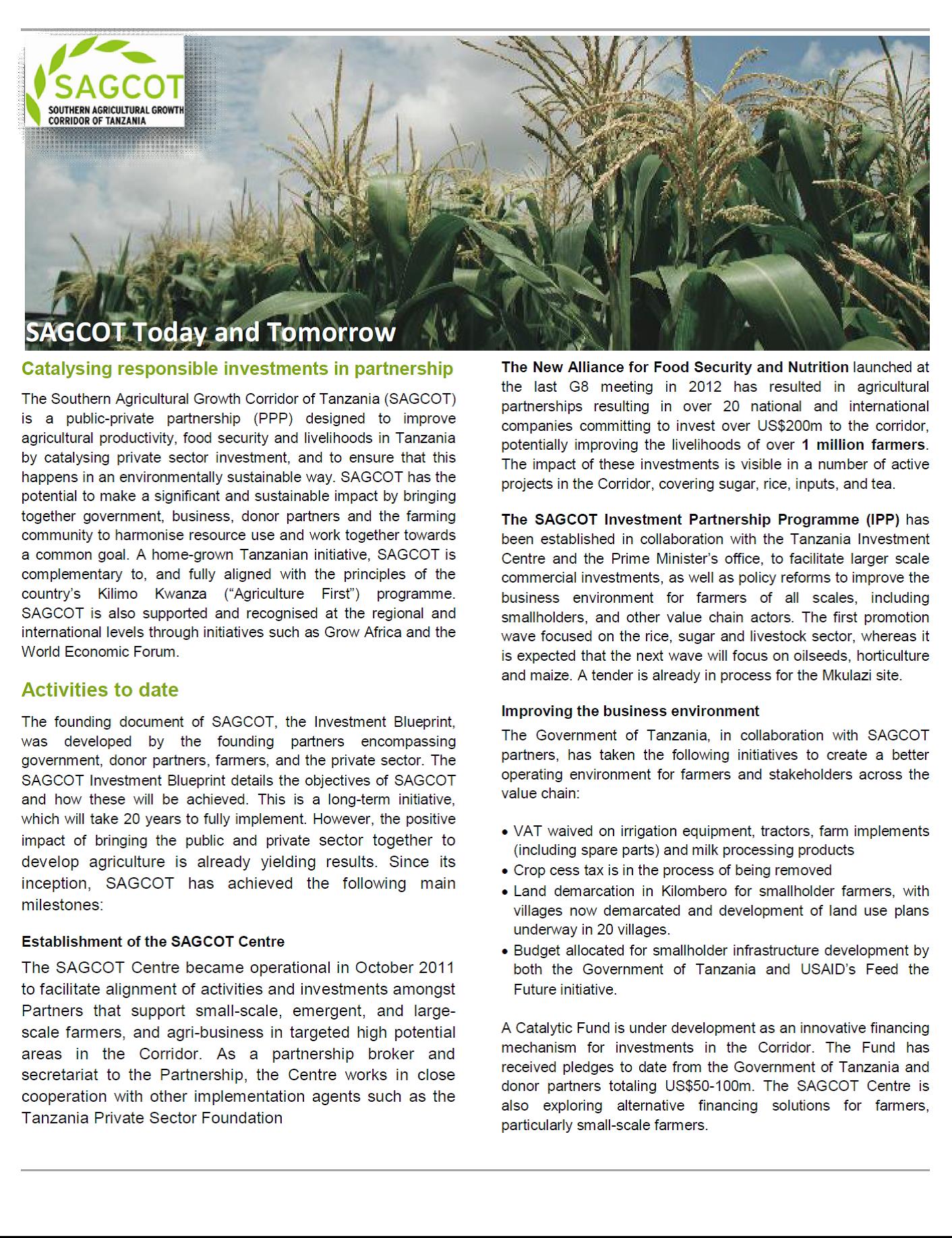Focal point
Location
The Southern Agricultural Growth Corridor of Tanzania (SAGCOT) is an agricultural partnership designed to improve agricultural productivity, food security and livelihoods in Tanzania. It was initiated at the World Economic Forum Africa summit in May 2010, following which the SAGCOT Investment Blueprint was launched nationally by Prime Minister Pinda in Dar es Salaam and internationally by H.E. President Kikwete at the 2011 World Economic Forum in Davos. The Investment Blueprint showcases investment opportunities in the Corridor and lays out a framework of institutions and activities required to reap the development potential.
Members:
Resources
Displaying 1 - 5 of 26SAGCOT Investment Partnership Programme
The Southern Agricultural Growth Corridor of Tanzania (“SAGCOT”) has been established as a public private partnership with the objective to enhance Tanzania’s food security and accelerate agricultural transformation. The mandate of the partnership is to achieve these objectives by catalyzing responsible private sector led agricultural development. Partners commit to ensure that investments improve livelihoods of smallholder farmers and their communities, are sustainable in terms of natural resource use.
Why invest in Tanzania’s agriculture?
Government has come together with the private sector and donor community to develop sustainable, profitable agribusinesses across the high-potential Southern region of Tanzania. This region is a key focus for efforts to improve the operating environment for investments in agriculture. Through the Southern Agricultural Growth Corridor of Tanzania (SAGCOT), US$3.5b will be mobilized in investment into this region over the next 20 years.
SAGCOT Investment Opportunity in Tanzania
Tanzania has a long history of sugar cane production and it has now a prioritized national policy to attract foreign investments into modern and industrial scale sugar cane production. Between 2001 and 2010, the production of sugar in Tanzania increased from 130,000 Mt pa to 280,000 Mt pa. This has been principally due to the refurbishment of four old sugar cane estates and rejuvenation of sugar cane farms. However, production capacities in existing mills are now approaching their limit and annual consumption is at 500,000 MT pa and growing rapidly.
SAGCOT Today and Tomorrow
The founding document of SAGCOT, the Investment Blueprint, was developed by the founding partners encompassing government, donor partners, farmers, and the private sector. The SAGCOT Investment Blueprint details the objectives of SAGCOT and how these will be achieved. This is a long-term initiative, which will take 20 years to fully implement. However, the positive impact of bringing the public and private sector together to develop agriculture is already yielding results. Since its inception, SAGCOT has achieved the following main milestones:
Mobilizing the Southern Agricultural Growth Corridor of Tanzania
This case study is part of a Harvard Kennedy School CSR Initiative workstream on systemic approaches to creating business opportunity and development impact at scale. An initial framing paper, “Tackling Barriersto Scale: From Inclusive Business Modelsto Inclusive Business Ecosystems,” was published in September 2011. This document is one of several in-depth case studies subsequently conducted to generate knowledge and provide practical guidance on what such systemic approaches look like and how to structure and implement them.






